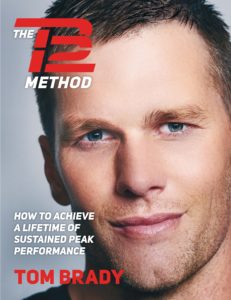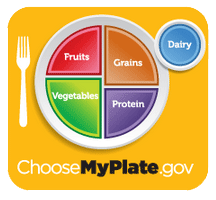In the last few years there has been quite the hype around a buzzword shaping into the #1 food trend in 2018– plant-based. With Patriot’s QB Tom Brady, one of the major league proponents of this diet, heading into his 8th Superbowl let’s take a closer look at what plant-based nutrition in and out of the sports arena is all about.
What is plant-based?
‘Plant-based’ is used to distinguish that the foundation or majority of the diet is fruits and vegetables. Are you aware that the Food Pyramid was replaced in 2011 by My Plate? In this image (above), vegetables make up the largest section, followed by grains. Fruits and vegetables fill half the plate, while proteins and grains fill the other half.
Notably, there is no distinct meat section– the ‘protein’ section includes meat, eggs, beans, nuts and seeds. While My Plate has been the new norm for almost a decade, more and more sports celebrities are jumping on the bandwagon to improve their performance.
Because an ounce of prevention is worth a pound of cure, whenever possible, I support my patients in making diet or lifestyle shifts that allow them to reach and or maintain their health and fitness goals. Because of societal shifts in recent years, more and more of my patients mention they’re exploring a plant-based diet to see how it works for them so I’ll share some of my basic recommendations for those interested in healthier eating:
1) Whenever making significant dietary changes, consult a physician or health professional, especially if you are on a medication heavily influenced by diet such as diabetes medication.
 2) You don’t have to reinvent the wheel-– For more information on what Tom Brady’s diet is like you can get the basics straight from his personal chef, Allen Campbell or check out Tom’s book, The TB12 Method. Purple Carrot is an all-vegan meal service that offers a TB12 option featuring higher protein and gluten-free meals inspired by Tom’s diet. For science-based nutrition advice directly from a Registered Dietician (and a good list of other resources), check out The Vegan RD.
2) You don’t have to reinvent the wheel-– For more information on what Tom Brady’s diet is like you can get the basics straight from his personal chef, Allen Campbell or check out Tom’s book, The TB12 Method. Purple Carrot is an all-vegan meal service that offers a TB12 option featuring higher protein and gluten-free meals inspired by Tom’s diet. For science-based nutrition advice directly from a Registered Dietician (and a good list of other resources), check out The Vegan RD.
3) Finally, start where you are at and work with your inherent ability to form new habits.
In other words, start with one change then allow ample time for it to become a new habit before adding in another change. The authoritative study on habit-forming shows that it takes an average of 66 days for a new practice to become a habit, so you could plan for adding a new change roughly every 2-8 months. For instance, you could start with one of the USDA’s top current dietary recommendations— make half of your plate at any meal fruits and vegetables– and go from there.




